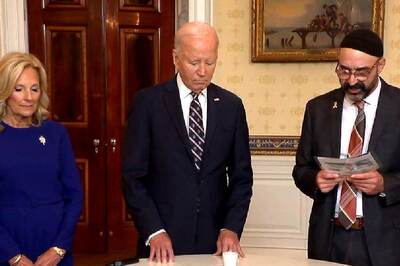
views
MOSINEE, Wis.: U.S. President Donald Trump announced a new round of pandemic assistance to farmers of about $13 billion at a campaign rally in Wisconsin on Thursday night, delivering aid to an important sector in a crucial battleground state.
“Starting next week my administration is committing an additional … $13 billion in relief to help farmers recover from the China virus, including Wisconsin’s incredible dairy, cranberry and ginseng farmers who got hurt badly,” Trump said, referring to the COVID-19 virus.
Wisconsin is known for its milk and cheese industries, which have been hard hit by both the White House’s trade policies and the COVID-19 pandemic.
Trump beat Democrat Hillary Clinton in Wisconsin in 2016 by less than 1% of the vote – and marked the first time the state had voted for a Republican in a presidential election since 1984.
Trump’s spoke in Mosinee, a rural town in central part of the state, came as state officials reported 2,034 new COVID-19 cases, a record one-day increase.
While the number of new COVID-19 cases reported in the United States fell 15% last week from the previous week, cases are rising in some rural states whose economies rely on the farm sector, according to a Reuters analysis.
Trump in April announced a $19 billion relief program to help U.S. farmers cope with the impact of the coronavirus, including $16 billion in direct payments to producers and mass purchases of meat, dairy, vegetables and other products.
It was not immediately clear which U.S. farmers would benefit from the new round of aid, or what funding source would be tapped.
China’s demand for U.S. corn and soybeans has been unrelenting in recent weeks, and it is importing more meat amid a potential food supply gap.
The flurry of export sales, along with extreme weather and sprawling drought across the U.S. Midwest this summer, has sent soybean prices to the highest seen in two years.
Disclaimer: This post has been auto-published from an agency feed without any modifications to the text and has not been reviewed by an editor


















Comments
0 comment